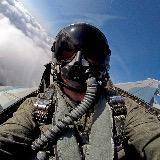Search Results (Searched for: )
- Mecanix
- Mecanix
16 Jul 2024 14:14
Replied by Mecanix on topic New and Working RTAI debs for 2.9
New and Working RTAI debs for 2.9
Category: Installing LinuxCNC
- Aciera

16 Jul 2024 14:02
- eduard

16 Jul 2024 13:56 - 16 Jul 2024 13:58
- Mecanix
- Mecanix
16 Jul 2024 13:55
Replied by Mecanix on topic linuxcnc post processor for Siemens NX CAM
linuxcnc post processor for Siemens NX CAM
Category: Post Processors
- JT

16 Jul 2024 13:54
Replied by JT on topic Mesa Configuration Tool
Mesa Configuration Tool
Category: Configuration Tools
- JT

16 Jul 2024 13:52
Replied by JT on topic Mesa Configuration Tool
Mesa Configuration Tool
Category: Configuration Tools
- eduard

16 Jul 2024 13:48
- Cant do this anymore bye all

16 Jul 2024 13:24
Replied by Cant do this anymore bye all on topic SMB share refresh question in debian
SMB share refresh question in debian
Category: Installing LinuxCNC
- zmrdko

16 Jul 2024 12:46
Replied by zmrdko on topic EtherCAT + EL6751 Configuration
EtherCAT + EL6751 Configuration
Category: EtherCAT
- bkt

16 Jul 2024 12:37
Replied by bkt on topic emc.hh -- hal_priv.hh --- etc etc not find
emc.hh -- hal_priv.hh --- etc etc not find
Category: HAL
- faradaygv

16 Jul 2024 12:35
Replied by faradaygv on topic Kinematics and Delta Robot
Kinematics and Delta Robot
Category: Advanced Configuration
- chienMouille
- chienMouille
16 Jul 2024 11:58 - 16 Jul 2024 12:00
Replied by chienMouille on topic SMB share refresh question in debian
SMB share refresh question in debian
Category: Installing LinuxCNC
- bkt

16 Jul 2024 11:08
Replied by bkt on topic emc.hh -- hal_priv.hh --- etc etc not find
emc.hh -- hal_priv.hh --- etc etc not find
Category: HAL
- endian

16 Jul 2024 11:06
Replied by endian on topic EtherCAT + EL6751 Configuration
EtherCAT + EL6751 Configuration
Category: EtherCAT
- Hendrixx
- Hendrixx
16 Jul 2024 11:04
Replied by Hendrixx on topic Mesa Configuration Tool
Mesa Configuration Tool
Category: Configuration Tools
Time to create page: 0.434 seconds
